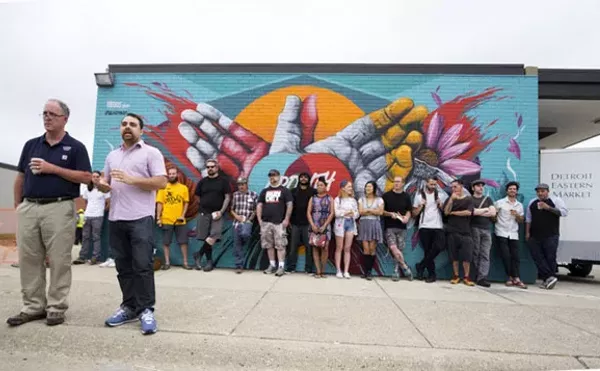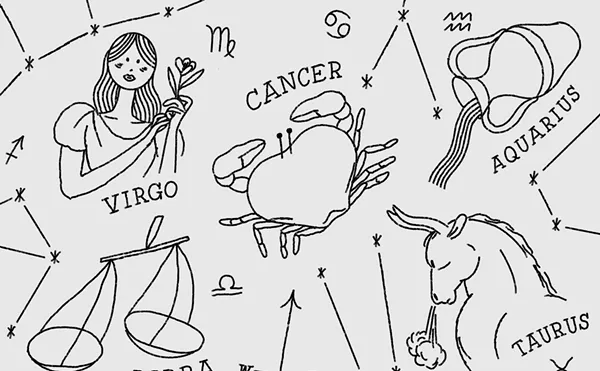
Audio By Carbonatix
[
{
"name": "GPT - Leaderboard - Inline - Content",
"component": "35519556",
"insertPoint": "5th",
"startingPoint": "3",
"requiredCountToDisplay": "3",
"maxInsertions": 100,
"adList": [
{
"adPreset": "LeaderboardInline"
}
]
}
]
THE VOLKSWAGEN BUG BOOK: A CELEBRATION OF BETTLE CULTURE
By Dan Ouellette
Angel City Press,
$30, 144pp.
I want to make one thing perfectly clear. There’s a right way and a wrong way to do this – talk about the past, I mean. And while it might be hard to put a one-word name to the right way of doing things, no such difficulty attends the wrong one.
Nostalgia.
That’s how not to do the right thing by memory: The warm, fuzzy, self-fulfilling profligacy that creates the need for its own specious self-satisfactions; a sort of ring-around-the -collar version of history that purports to solve a problem you didn’t even know you had in the first place. Not, at least, until you bought the opportunistic cure.
Take, for instance, The Volkswagen Bug Book, by Dan Ouellette. According to its own dust jacket, this book is: "Overflowing with nostalgia … The Bug Book is a high-design trip back to when Beetles filled the highways, Flower Children roamed the streets, and Love and Bug were forever linked."
Don’t you feel better about yourself already, in a kind of mush-brained, very Brady way? Which illustrates precisely what’s wrong with nostalgia: It translates into rub-a-dub, prepackaged kitsch a kind of curiosity that, if otherwise engaged, might in fact lead to interesting, even valuable speculations. Even – God forbid – genuine self-knowledge.
Not that there isn’t a story here to tell – historically, a very interesting story – which is just the problem with Ouellette’s fast-and-loose smarming of the past. And not that The Bug Book gets everything wrong, although generally the incidentals – small factoids and illustrative bits – rather than the main text, are the most interesting (and credible) parts.
OK, OK, so it’s a coffee table book; it’s supposed to be derivative, littered with clichés, long on gush and short on intelligence, and (given the overtly nostalgic subject) always nudging us down memory lane, instead of leading us toward anything remotely resembling an idea.
Still, it ought to have been a whole lot better. This is a large-format, full-color book, with precious little chapters ("Bug Intro," "Bug Art," "Bug Culture," etc.) and also brief, interspersed "BugFiles" ("Rent-A-Bug," "Who Owns Volkswagens," and so on).
These latter bits turn out to be the most interesting part of the book, along with archival photos from the Volkswagen corporate museum. For instance, there’s the BugFile about the exclusive Budget Rent-A-Car of Beverly Hills (no kin to the national chain), which was the first place in the United States where you could rent a new Beetle; or the one about Beetle Milestones, which details important moments in VW history, such as the date (February 1972) when Beetle production reached 15,007,034, thus surpassing Henry Ford’s Model T, and making the VW Bug the best-selling car in history.
Ouellette even adds the odd, quirky factoid to his own exposition, mentioning, for instance, the fondness that mass murderers Charles Manson and Ted Bundy had for VW Beetles.
Mostly, though, this book is notable for what it doesn’t do, more than what it does, which is the problem with nostalgia; it lets people off the historic hook. (Not that this isn’t what most of us probably want.) But Ouellette seemed at the start to have bigger – and darker – things on his mind: "Ironically, the import that epitomized the nonconformist spirit of the late ’60s and early ’70s’ love-and-peace counterculture in the U.S. was the offspring of Adolph Hitler’s ‘motorize the people’ campaign in the ’30s. The vehicle of choice for eco-conscious hippies extolling its magical gas mileage in contrast to Detroit’s petrol guzzlers, was in fact one of the most notorious air polluters on the road."
Now that’s interesting stuff, just like the two chapters where Ouellette talks about the origin of Hitler’s "people’s car" in the Nazi Strength-Through-Joy organization, and the one where he discusses the marketing of the old and new Beetle. Such matters – historically conflicted, factually based, culturally complex – seem to be mere intermittent inconveniences, however. Most of the time, Ouellette’s job is to make life – like his beloved Beetle – seem just cute as a bug.





